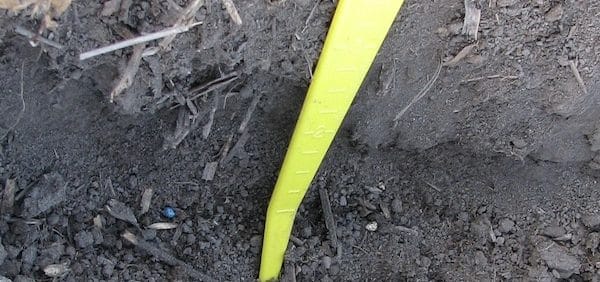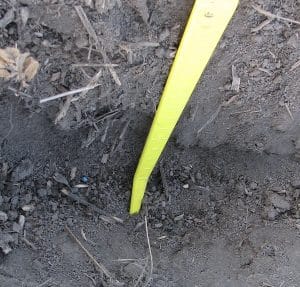In dry soil conditions, growers may be tempted to seed deep enough to reach moisture. This is not necessary in late April and early May, and may create more harm than good. The common recommendation to seed no deeper than 1” still applies. Here’s why:
—There is still lots of time to wait for a rain to provide the moisture needed for germination and emergence.
—Going deeper to reach moisture also means cooler soil. Cool conditions combined with the extended distance seedlings must grow to reach the soil surface will mean higher seed and seedling mortality. Higher seeding rates will be needed to compensate.
—Deep seeding guarantees that some will go into secondary dormancy. Dormant seed will not germinate this year, and will add to the volunteer canola seed bank.
—Deep seeding allows weeds emerging at the same time to get ahead of the crop. Shallow seeding is a good integrated weed management technique.
Things to consider:
Shallow seeding into dry hilly land may result in uneven emergence if seeds in low spots have enough moisture to germinate even without a rain event. However, in these fields, deep seeding to reach moisture may not necessarily be an improvement. Uneven emergence is still a strong possibility. The good news is that seeds emerging first in these lower areas may mature later due to better moisture and fertility, so in the end, differences in emerge date between low spots and hill tops may even out later in the season.
Soil type. Growers may get away with deeper seeding — at 1” instead of 1/2” — in lighter soils. Sandier soil tends to dry out faster on top, so moisture and seedbed conditions would be better at this slightly deeper depth.
Tillage. In tilled fields, the top layer will be dusty in dry conditions, so seeding at 1” instead of 1/2” could be a benefit. Soil temperature at depth will also be warmer in worked soil, reducing the cold soil effect on germination.


